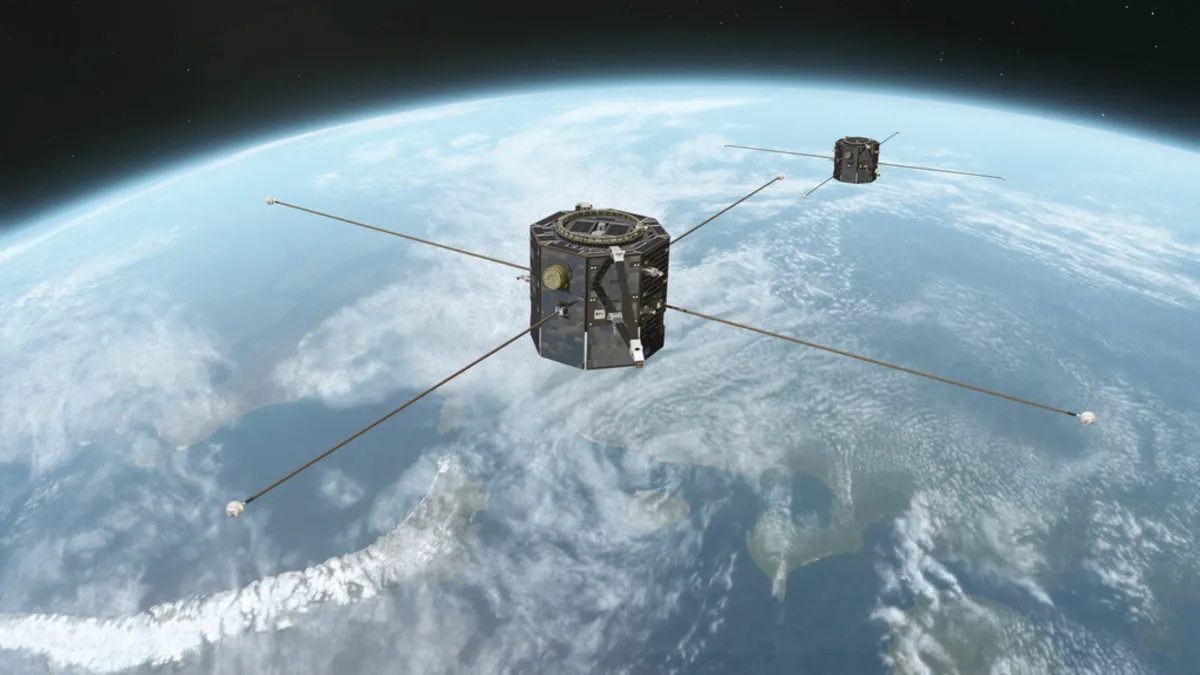
A groundbreaking mission is set to launch, aimed at studying magnetic storms in low-Earth orbit and their effects on our atmosphere and satellites. NASA's Tandem Reconnection and Cusp Electrodynamics Reconnaissance Satellites, known as TRACERS, will consist of two satellites that will operate in a sun-synchronous orbit. This unique orbit ensures that the satellites are positioned over the dayside of the Earth and will pass through the polar cusps—two openings in Earth's magnetosphere where magnetic field lines connect to the poles.
When solar wind particles collide with Earth's magnetosphere, they can overload the magnetic field lines, leading to a phenomenon called magnetic reconnection. This process involves the disconnection and reconnection of magnetic field lines, releasing energy that accelerates charged particles into the atmosphere. If solar storms are intense, these particles can result in stunning auroras as they interact with atmospheric molecules. The TRACERS mission, which is expected to launch no earlier than late July, aims to deepen our understanding of this process and its implications for space weather.
According to Joe Westlake, Director of NASA's Heliophysics Division, the insights gained from the TRACERS mission are crucial for predicting how energy from the sun affects not only Earth but also our technological infrastructure, including GPS, communication systems, power grids, and the safety of astronauts in space. Historically, studying magnetic reconnection has posed challenges; when satellites pass through these regions, they only capture a momentary snapshot of the data. This limitation makes it difficult to understand the dynamic changes occurring in the magnetic environment.
David Miles, the principal investigator for TRACERS from the University of Iowa, emphasizes the mission's innovative approach. By deploying two satellites that closely follow each other, TRACERS will provide a series of closely spaced measurements. As one satellite passes through the reconnection zone, the second will follow just two minutes later, allowing scientists to observe changes in the magnetic and electric field strengths in real-time. This unprecedented data collection will enhance our understanding of how solar output interacts with near-Earth space.
TRACERS will not operate in isolation; it will collaborate with existing missions such as NASA's Magnetospheric Multiscale Mission (MMM), which studies magnetic reconnection from a distance, and the Polarimeter to Unify the Corona and Heliosphere (PUNCH) as well as the Electrojet Zeeman Imaging Explorer (EZIE). These missions, alongside TRACERS, contribute to a comprehensive understanding of solar-wind interactions with our planet from low-Earth orbit.
With a budget of $170 million, TRACERS is set to launch aboard a SpaceX Falcon 9 rocket, which will carry several small missions into orbit simultaneously. The knowledge gained from TRACERS regarding magnetic reconnection will be pivotal in protecting critical infrastructure from the impacts of solar storms, ultimately ensuring the safety of our way of life on Earth.